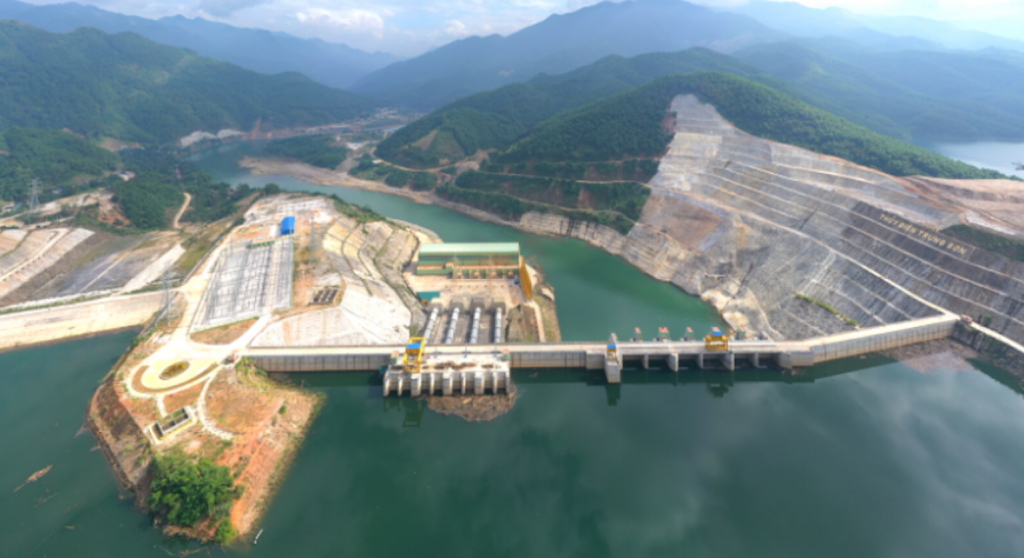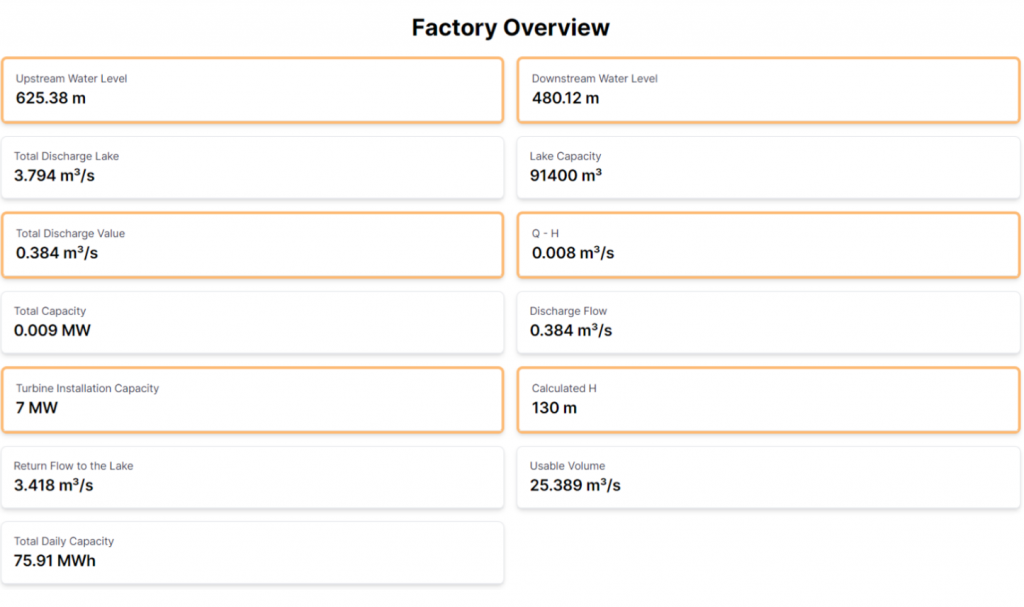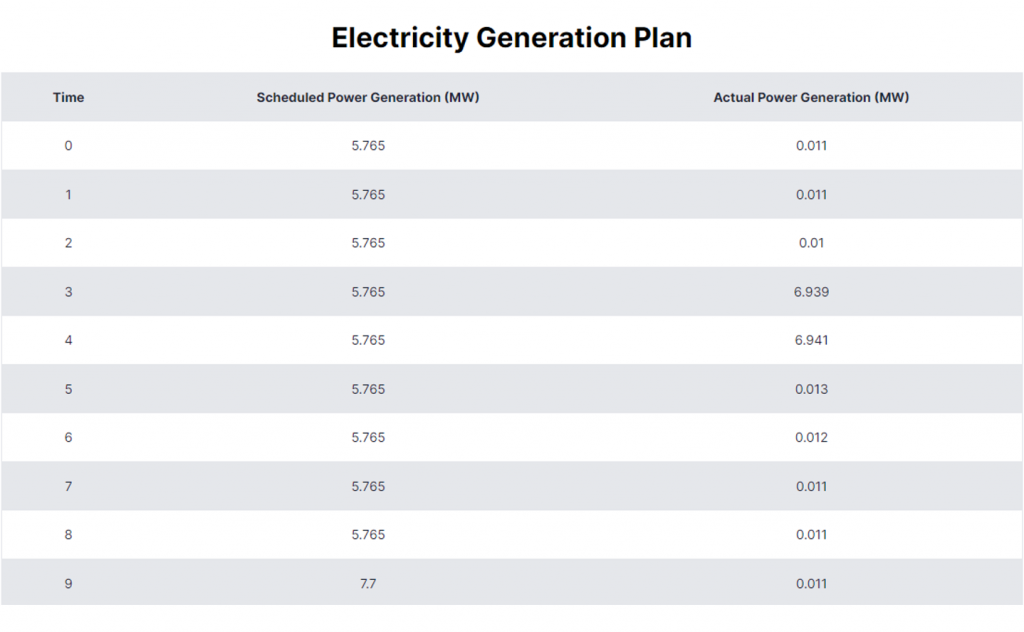An increasing demand for carbon-neutral energy and the recent changes in the global energy market have made energy production, consumption, and price highly important for the global economy and individual consumers. In a recent project, we develop a real-time analysis system for a hydropower plant in Vietnam. Results suggest that sensor data and real-time processing give valuable information to plant operators and stakeholders, and significantly improve the revenue generated.
Hydropower is the most important source of fossil-free energy, covering about 15 percent of global electricity production [1]. The great benefit of hydropower is its scalability. Electricity production can be maximized during the highest consumption hours, which usually offers the highest energy price.
Rapid economic growth and urbanization made Vietnam and interesting region for this study. Hydroelectric power emerges as a crucial solution, leveraging the nation’s rivers and highlands for renewable energy generation. Vietnam’s diverse geography and abundant water resources position it as a prime location for hydroelectric power generation. The country’s tropical climate, characterized by distinct wet and dry seasons, significantly influences hydropower production. During the wet season (May to October), heavy rainfall boosts water levels and energy output, while the dry season (November to April) presents challenges with reduced precipitation [2].
Vietnam’s strategic location in Southeast Asia, coupled with its numerous rivers like the Red and Mekong, provides ideal conditions for hydroelectric development. Recent government initiatives and international collaborations have spurred the construction of new hydro projects, aiming to tap into Vietnam’s untapped hydropower potential while diversifying its energy mix and reducing reliance on fossil fuels [3].
These plants (image 1) not only bolster energy security but also combat climate change by curbing emissions. With Vietnam’s commitment to renewable energy showcased at CP26 and a pledge to achieve net zero emissions by 2050, hydroelectric power plays a pivotal role in this transition. This is a very ambitious goal considering that more than half of the energy is produced by coal at the moment [4].

While rivers themselves are a limited resource it is possible to maximize hydropower energy production by optimizing the ways the power plants are operated. Continuous monitoring and data-driven decision-making are essential for optimal operation and maintenance of hydro plants [6].
The plants in Vietnam can be private corporations but the government owns the electricity grid and buys the electricity from companies. The actual pricing scheme depends on the contract between the company and the government, which makes the business environment somewhat different from the Northern European system. The fluctuations in prices are in general smaller in Vietnam, but the government in general pays higher prices for rush-hour electricity.
Real-Time Analysis Dashboard: Maximizing Revenue in Hydroelectric Power Plants
Real-time data monitoring stands as a cornerstone in the optimization of hydroelectric power plant operations, playing a pivotal role in ensuring both efficiency and revenue maximization, particularly during periods of peak demand. Through the strategic activation of generators based on real-time insights overseen by a dedicated team leader, the ability to dynamically respond to fluctuations in demand is ensured, thereby maximizing energy output when it matters most.
Optimizing sales during peak demand hours, usually weekdays from 04:00 to 22:00, is crucial for maximizing revenue in the electricity sector. Seizing these peak periods could yield a minimum 15 percent revenue hike. It highlights the necessity of comprehending consumption trends to adeptly balance energy supply and demand. [4]
The ability to dynamically optimize power generation in alignment with market demand not only enhances profitability but also strengthens operational resilience. By leveraging real-time data insights, proactive adjustments to operational strategies can be made to meet evolving demand patterns, thereby minimizing downtime, and maximizing the efficiency of hydroelectric power plants.
In essence, real-time data monitoring serves as a cornerstone in the commitment to operational excellence and financial success within the hydroelectric power generation sector. By embracing dynamic optimization strategies, there is the potential to not only meet but exceed the energy needs of customers while simultaneously driving sustainable growth and innovation within the industry [4].
Dashboard Insights, Power Plans, and Production and Revenue
In this project, we created a web application to support the data-driven decision-making of power plant operations. This involves accessing real-time data from hydropower plant APIs and developing custom algorithms for data analysis. The focus lies in creating dashboards that facilitate decision-making in optimizing machine runtime, especially during peak periods.
The web application utilizes real-time data from Weather Plus cloud APIs, offering valuable insights into operational performance and efficiency. The API updates data hourly, ensuring timely information retrieval. Key parameters like power output, water flow rates, and turbine efficiency are extracted from these APIs.
The data visualization page (image 2) in our application serves as a vital interface for stakeholders to understand the power plant’s operational performance. It provides essential parameters such as total capacity, discharged flow, return flow, usable volume, and total daily capacity, aiding in comprehending the plant’s status. While the power plant algorithm operates on a separate page, the visualization page presents analyzed data in an accessible format for informed decision-making.

Beyond the core production processes, a comprehensive tracking system has been introduced, featuring a detailed table to monitor monthly production quantities. An example is shown in image 3. This table serves as a vital tool for evaluating manufacturing efficiency and identifying trends over time. Additionally, it facilitates the computation of monthly revenue totals, offering valuable insights into financial performance and supporting strategic decision-making.

Through this data-driven approach, operations are optimized, productivity is boosted, and profitability is maximized. Leveraging insights gleaned from the tracking system allows for informed adjustments to enhance efficiency and ensure sustained growth. This commitment to data-driven decision-making underscores dedication to operational excellence and financial success in the ever-evolving landscape of hydroelectric power generation.
Key Insights: Optimizing Hydroelectric Power Generation
An algorithm has been developed to optimize the performance of hydroelectric plants in Vietnam’s rapidly expanding sector. This algorithm, which automates the calculation process, has significantly eased the workload of plant operators and enabled proactive decision-making. The system has been tested for one month at a specific hydro plant, with early findings revealing encouraging advancements in plant operations. The goal is to develop a scalable solution that can be applied to numerous plants across the sector, facilitating operational improvements and fostering sustainable growth. The algorithm has demonstrated considerable cost savings and revenue potential, with projections showing an annual saving of at least 180 000 euros and a revenue increase of at least 15 percent through optimized operating times.
In the context of hydropower plant investments, transparency is crucial and is achieved by providing stakeholders with real-time insights into the plant’s operational performance. A dynamic analysis system, central to this approach, enables stakeholders to access up-to-date information, facilitating informed investment decisions. The system includes a user-friendly, web-based dashboard that provides valuable insights into various aspects of the plant’s performance. The online accessibility of the dashboard fosters trust and encourages collaboration among stakeholders, enhancing the overall success and sustainability of the investment. By providing timely, actionable insights, the real-time analysis system promotes efficient management of the hydro plant, maximizing returns and ensuring long-term viability.
The operational team at the hydro plant, which previously relied on manual calculations, has seen a significant shift in their approach with the introduction of an algorithm. This algorithm automates calculations and integrates data on both Scheduled and Actual Power Generation, streamlining operations and ensuring precise decision-making. It also generates detailed monthly production and revenue reports, fostering transparency and driving operational efficiency. The system’s real-time monitoring capabilities provide stakeholders with round-the-clock access to critical information, enabling prompt decision-making.
Ilpo Virtanen
Principal lecturer
Information technology
Oulu University of Applied Sciences
Minh Phuong Pham
Studies as Bachelor of engineering in Oulu University of Applied Sciences
Trieu Duong Pham
Studies as Bachelor of engineering in Oulu University of Applied Sciences
The blog is based on bachelor’s thesis: Pham, M. P., & Pham, T. D. (2024). Real-Time Data Monitoring and Decision Support System. Empowering Informed Decisions with Live Data Insights [Bachelor's Thesis, Oulu University of Applied Sciences, Degree Program in Information Technology]. Theseus. https://urn.fi/URN:NBN:fi:amk-202404267963
References
[1] Ember. (17.4.2024). Yearly electricity data. Retrieved December 23, 2023, from https://ember-climate.org/data-catalogue/yearly-electricity-data/
[2] Vietnam Electricity. (n.d.). Electricity prices by hour. Retrieved March 31, 2024, from https://evn.com.vn/c3/evn-va-khach-hang/Gia-ban-dien-theo-gio-9-81.aspx
[3] Huong, N. (9.6.2023). 11 hydropower plants cease production. Vietnam Investment Review. https://vir.com.vn/11-hydropower-plants-cease-production-102490.html
[4] Do, T. N., & Burke, P. J. (2023). Phasing out coal power in a developing country context: Insights from Vietnam. Energy Policy, 176, 113512. https://doi.org/10.1016/j.enpol.2023.113512
[5] The World Bank. (18.12.2020). Powering up Vietnam with clean and affordable energy: The Trung Son Hydropower Plant development experience. https://www.worldbank.org/en/results/2020/12/18/powering-up-vietnam-with-clean-and-affordable-energy-the-trung-son-hydropower-development-experience
[6] Vietnam Electricity. (n.d.). Overview of hydropower in Vietnam. Retrieved March, 31, 2024 from https://en.evn.com.vn/d6/news/Overview-of-hydropower-in-Vietnam-66-163-1514.aspx
[7] Pham, M. P., & Pham, T. D. (2024). Real-Time Data Monitoring and Decision Support System. Empowering Informed Decisions with Live Data Insights [Bachelor’s Thesis, Oulu University of Applied Sciences]. Theseus. https://urn.fi/URN:NBN:fi:amk-202404267963

Vastaa
Sinun täytyy kirjautua sisään kommentoidaksesi.